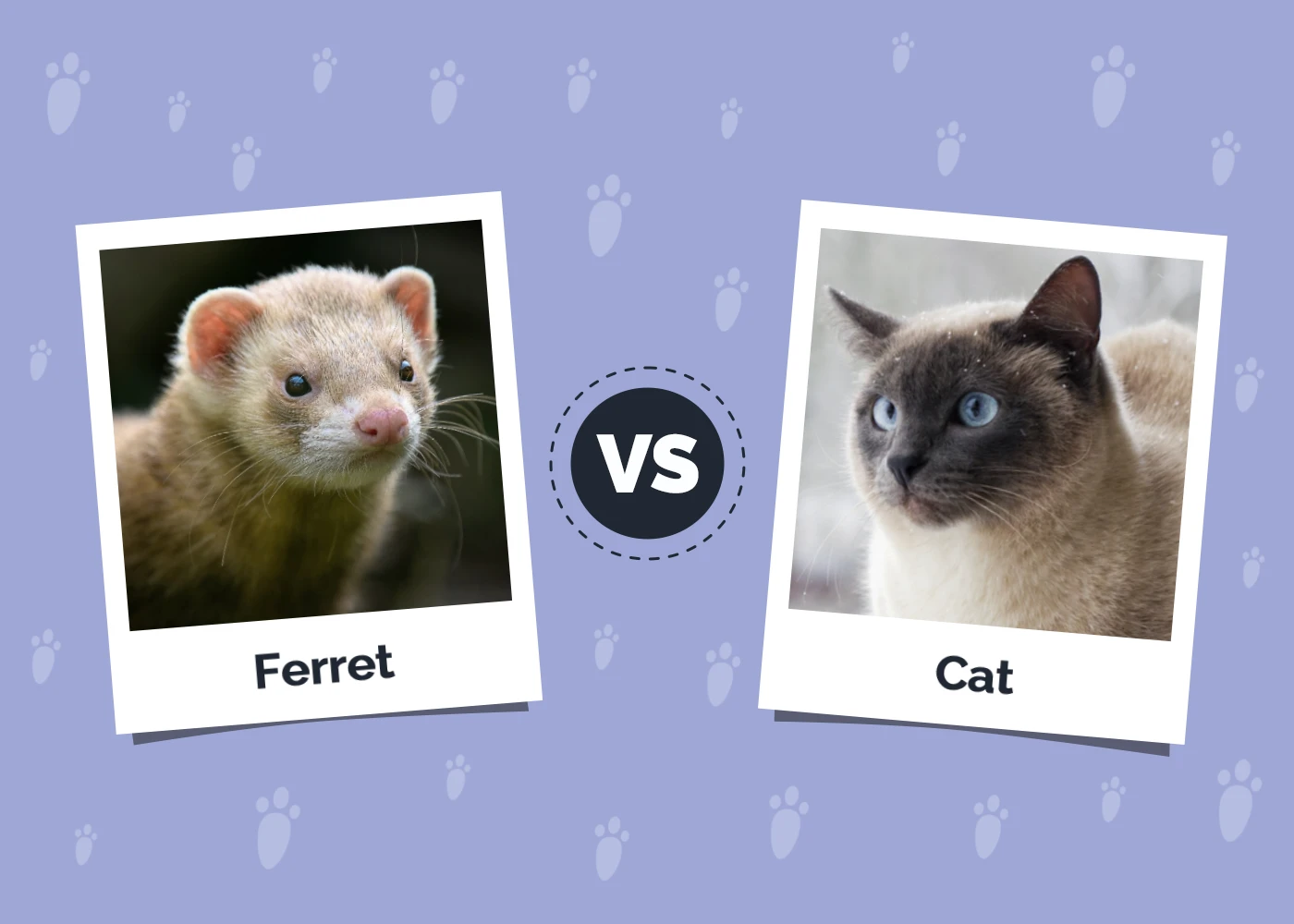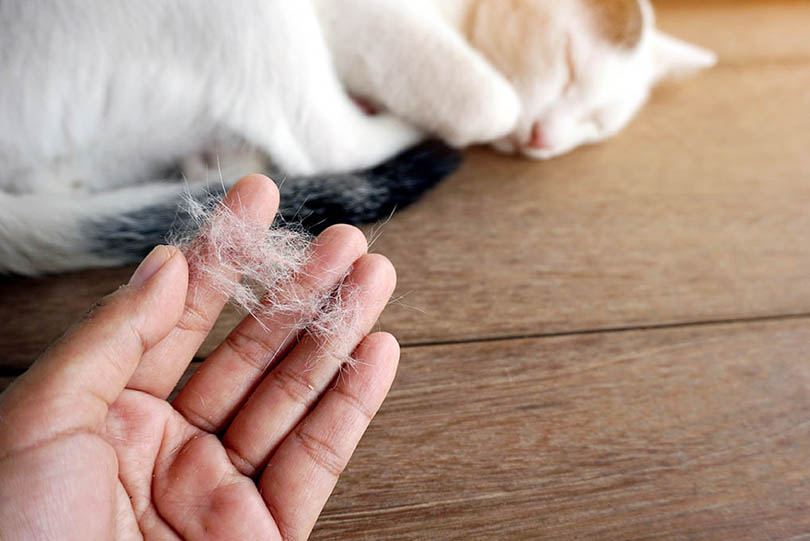15 Blonde Cat Breeds (with Pictures)
Updated on
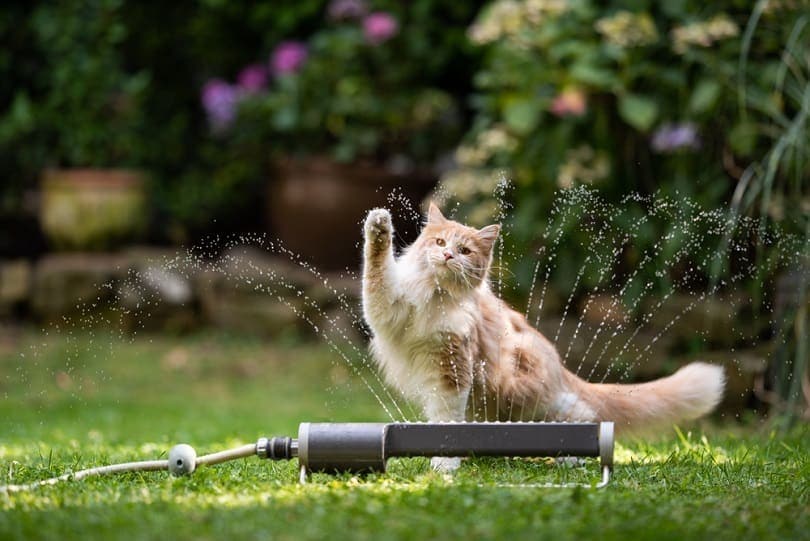
Are you in search of a blonde-colored cat to add to your family and need to figure out where to start? Well, we are here to help you out. First of all, you’ll need to drop the term “blonde” from your search criteria. In the world of cats, blondes are considered cream and there are several different variations of cream within recognized color varieties within breed standards.
The cream coat coloration is a dilute color from the primary color red. The cream color is naturally occurring but is considered rare in cats, which is why this coloration is more commonly found in purebreds. Here we will talk about the different cat breeds you’ll find in cream-colored varieties and patterns and help you determine which “blonde” breed would be right for you.
The Top 15 Blonde Cat Breeds
1. American Bobtail
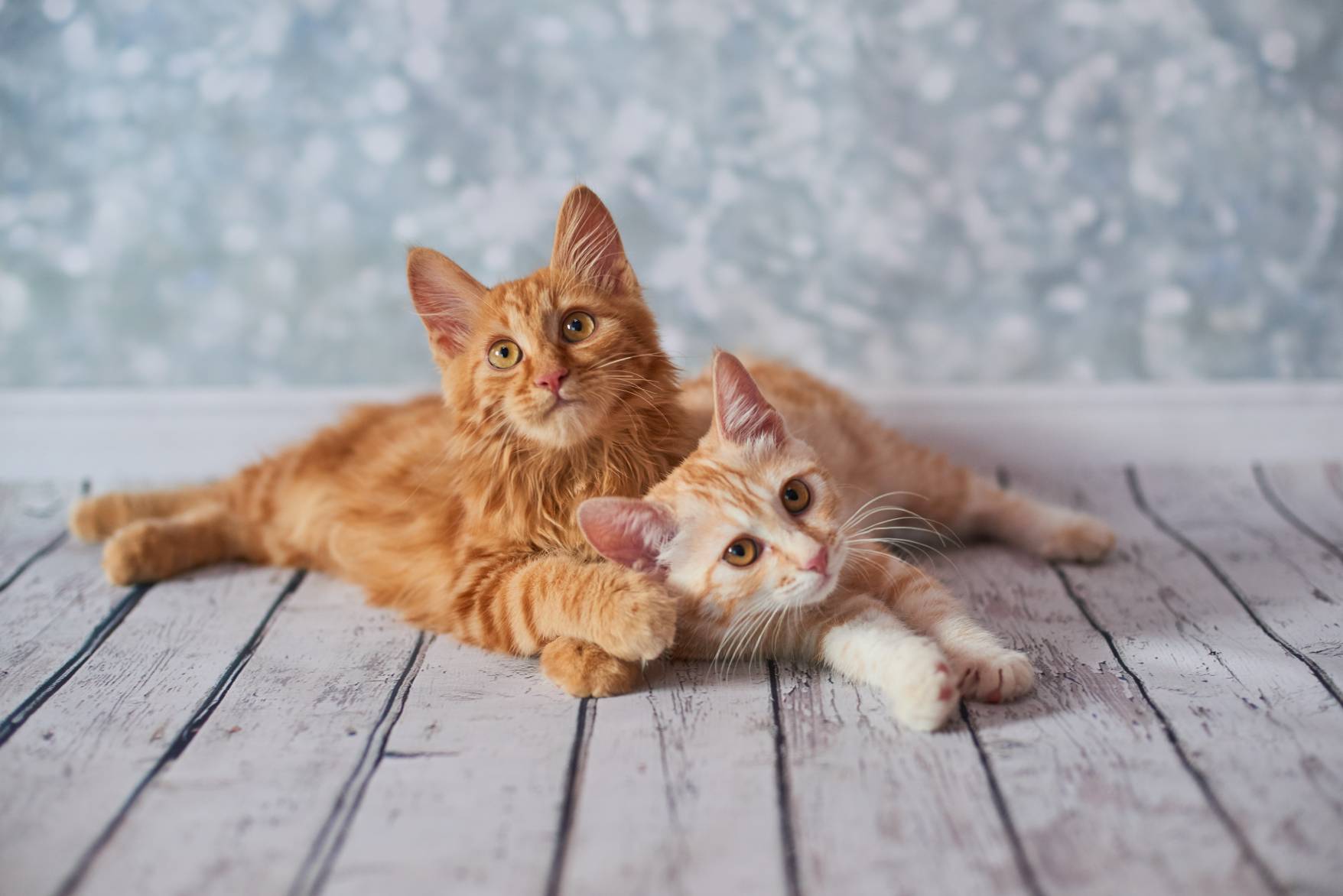
| Lifespan: | 15–20 years |
| Weight: | 11–20 pounds |
| Coat Length: | Medium to long |
The American Bobtail first made its appearance in the 1960s. They were first recognized as a breed by the International Cat Association in 1989. In 2000 they were approved for registration by the Cat Fancier’s Association and were given provisional status by 2005.
Their short, bobbed tail is the result of a genetic mutation within domesticated cats. That and their sturdy, athletic build give the breed its distinct, wild appearance. These cats are very intelligent, playful, and adaptable and are known for being excellent lap cats. They mature a bit slower than most breeds, reaching adulthood between 2 and 3 years of age. They have a wide variety of recognized coat color variations and patterns, including cream.
2. American Curl
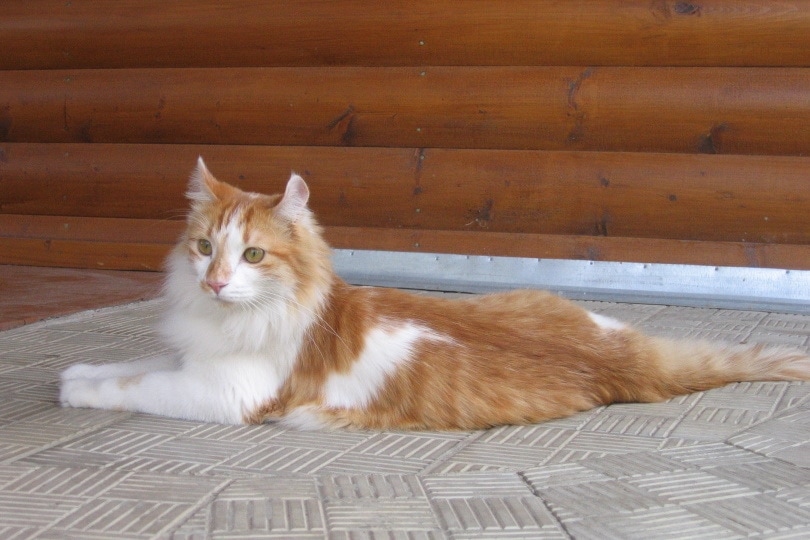
| Lifespan: | 15–18 years |
| Weight: | 5–10 pounds |
| Coat Length: | Medium to long |
With origins in Lakewood, California in June 1981, the American Curl started with one black female, named Shulamith. Shulamith had a unique genetic mutation resulting in distinct curled ears. She gave birth to a litter of kittens with the same curled ears and thus began the breed.
The breed was first exhibited at a Cat Fancier’s Association show in Palm Springs, California in 1983 but was not approved for registration until 1986. The American Curl is very down-to-earth, loyal, and affectionate. They are known for their adaptability and being great with other pets. The cream coloration is among one of the recognized colors for the breed.
3. American Shorthair
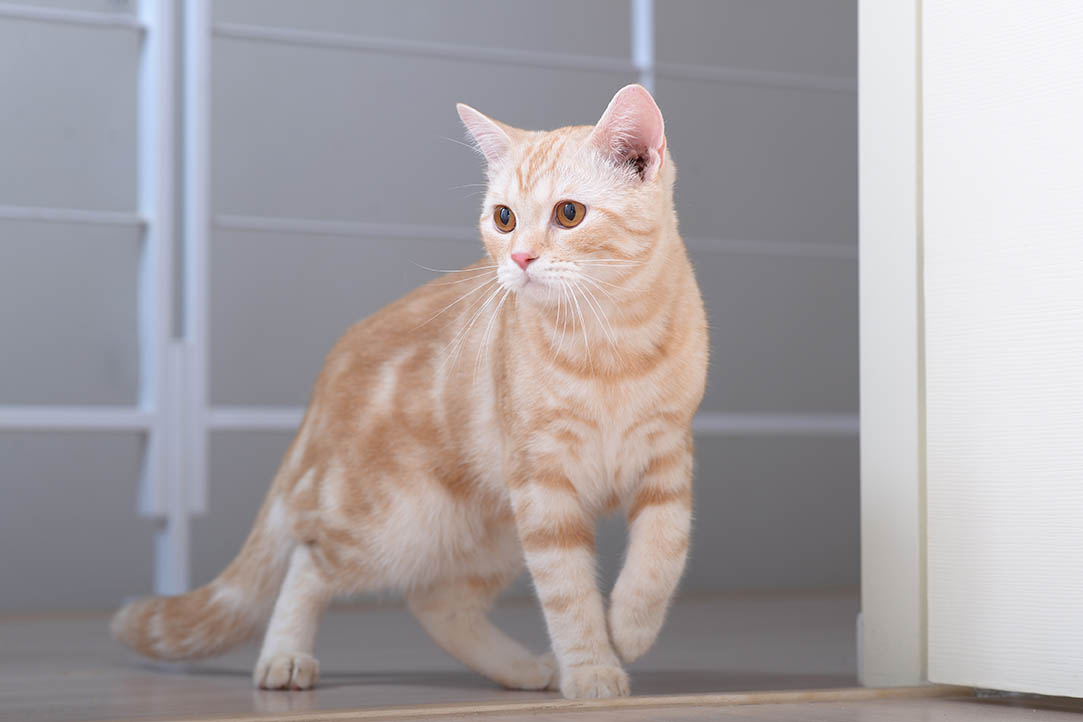
| Lifespan: | 15–20 years |
| Weight: | 8–12 pounds |
| Coat Length: | Short |
The American Shorthair used to be known as the Domestic Shorthair until they were renamed in 1966. Before the change of name, they were among the first five breeds to be registered by the Cat Fancier’s Association in 1906.
The breed has golden or green eyes, a dense coat, and comes in 80 different colors and patterns, including cream varieties. These cats are generally healthy, docile, and affectionate with their owners. They are a loveable breed that maintains an even temperament and is welcoming toward strangers.
4. Birman
| Lifespan: | 15–20 years |
| Weight: | 6–15 pounds |
| Coat Length: | Medium to long |
Though there is no certainty behind the origins of the Birman, they are claimed to have originated as a companion to the temple priest of northern Burma on the Mount of Lugh. The Birman made their way to France where they were first recognized by the Cat Club de France in 1925. They were later recognized by the Governing Council of the Cat Fancy in England in 1966 and the Cat Fancier’s Association in the United States in 1967.
The Birman is a gorgeous, pointed breed with a medium to long silky coat and four white socks. They do come in a recognized cream variety. The breed is great with other pets and is well known for being playful, curious, and the best lap cats you can find.
5. British Shorthair
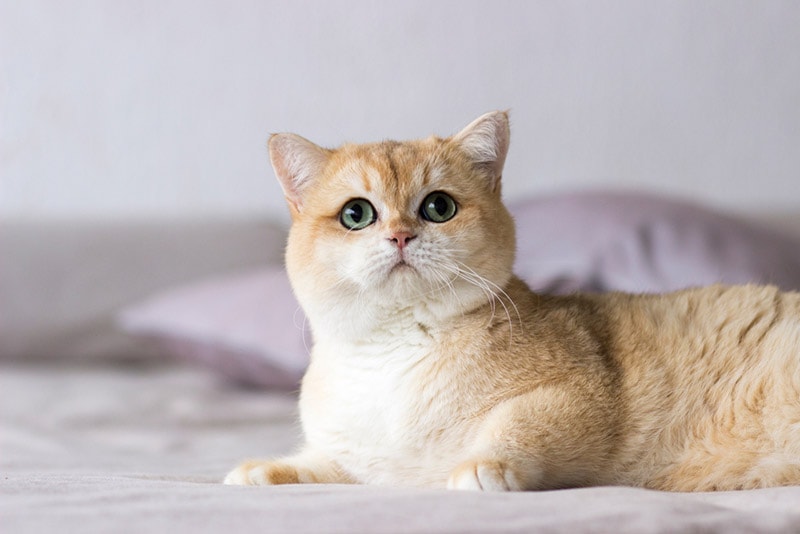
| Lifespan: | 15–20 years |
| Weight: | 6–12 pounds |
| Coat Length: | Short |
In 1871, a British Shorthair won Best in Show at 14 years old at the first formal cat show held at the Crystal Palace in London, England. The breed first arrived in the United States at the beginning of the 20th century. Though popularity declined after the First World War but has since made a comeback.
The breed is accepted by both the Cat Fancier’s Association and The International Cat Association. They are very even-tempered and a bit more reserved than most breeds. You can find them in the cream varieties for those looking for a blonde cat.
6. Devon Rex
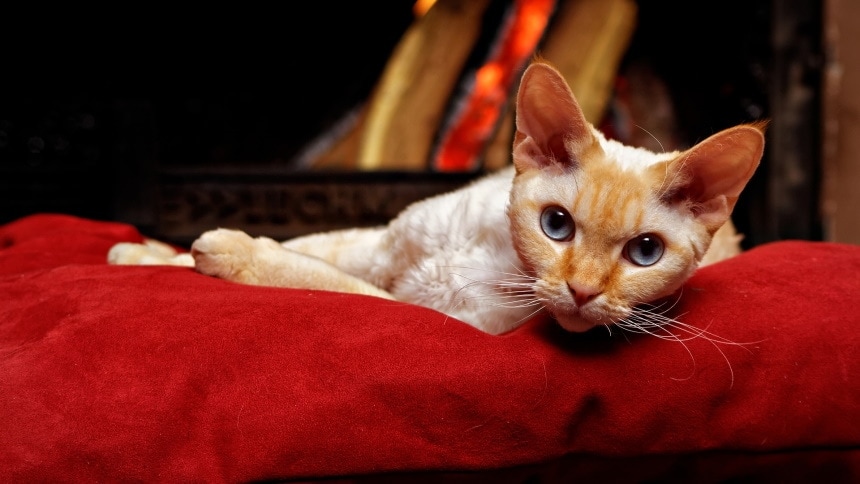
| Lifespan: | 15–20 years |
| Weight: | 8–12 years |
| Coat Length: | Short |
The Devon Rex breed came to be in 1960 because of a suspected spontaneous genetic mutation that resulted in their signature curly coat. They originated in Devon, England, hence the name. The breed first arrived in the United States in 1968 and is now accepted by every large registry including the Cat Fancier’s Association and The International Cat Association.
Devon Rex comes in cream-colored coat varieties among many others. They are known for their extremely large, bat-like ears and pixie faces. They are active, energetic, social, and very intelligent.
7. Japanese Bobtail

| Lifespan: | 15–18 years |
| Weight: | 5–10 pounds |
| Coat Length: | Short to long |
The Japanese Bobtail is believed to have originated in China more than 1,000 years ago, making its way into Japan as a gift to the emperor. They first came to the United States in 1968 and earned championship status by the Cat Fancier’s Association in 1976.
The breed is intelligent, affectionate, and confident. They are very social and people-oriented and much prefer homes with other pets, as they do not enjoy being left alone. They come in many different color variations, including cream.
8. Maine Coon
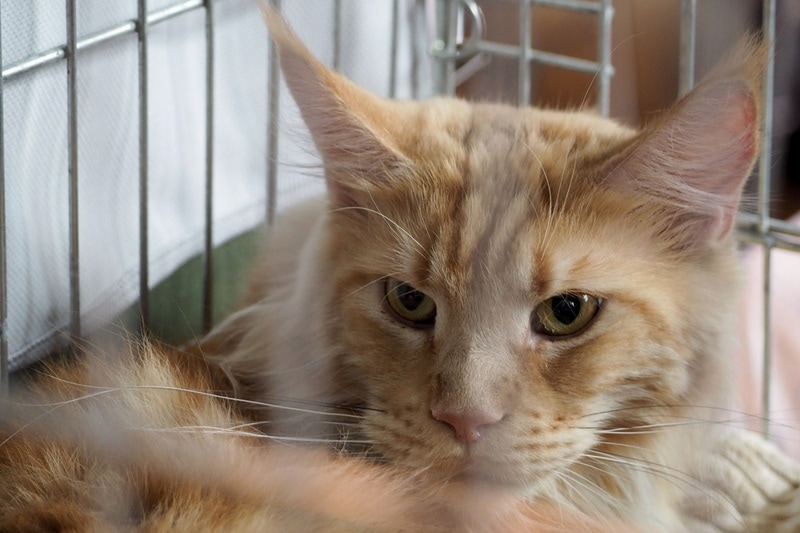
| Lifespan: | 12–15 years |
| Weight: | 8–20 pounds |
| Coat Length: | Long |
The Maine Coon is one of the most popular cat breeds in the United States. Originating in Maine and built for the rugged northeastern winters, this breed is known for its large size and gentle-giant temperament. They received championship status by the Cat Fancier’s Association in 1950.
The Maine Coon is mellow, even-tempered, affectionate, and makes wonderful lap cats. They do require more grooming than your average cat but do great in multiple pet households. Though extremely rare, Maine Coons do come in cream color varieties.
9. Manx

| Lifespan: | 15–18 years |
| Weight: | 8–12 pounds |
| Coat Length: | Short |
The Manx is an old breed that was first accepted by the Cat Fancier’s Association in 1906 and by The International Cat Association when it was first established in 1979. They are known for their signature short, bobbed tail, though some have short tails, and a few will exhibit full-length tails.
This breed absolutely thrives around people and loves to be in your company. In addition to being social, they are also very intelligent and playful. Commonly referred to as a more dog-like cat breed, you can find Manx in cream color varieties.
10. Norwegian Forest Cat
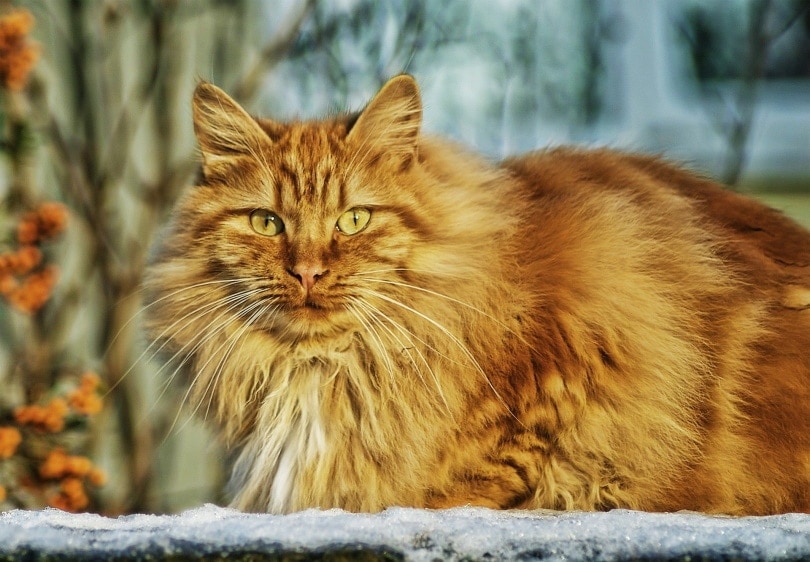
| Lifespan: | 15–20 years |
| Weight: | 12–22 pounds |
| Coat Length: | Long |
The Norwegian Forest cat was first registered in Europe in the 1970s, and by the Cat Fancier’s Association in 1994. These cats are large, and their coat is built for the harsh Norwegian winters and consists of a thick, glossy top coat that is water repellent and a dense wooly undercoat.
The Norwegian Forest cat is friendly, intelligent, and has lots of energy. They are people-oriented and thrive well as family pets. This breed is available in cream-colored varieties in addition to many others.
11. Oriental
| Lifespan: | 15–20 years |
| Weight: | 7–12 pounds |
| Coat Length: | Short |
In 1950, a seal point Siamese was crossed with a Russian Blue, and over several generations of selective breeding, the Oriental was eventually produced. It was first referred to as the Foreign Shorthair, but the name was changed in the early 1970s. They got championship status from the Cat Fancier’s Association in 1977.
Orientals have almond-shaped eyes, very large ears, a distinct, wedge-shaped head, and a sleek, lean body. This breed is very active and energetic and tends to be quite chatty. You can find them in cream color varieties among many other coat colors.
12. Persian
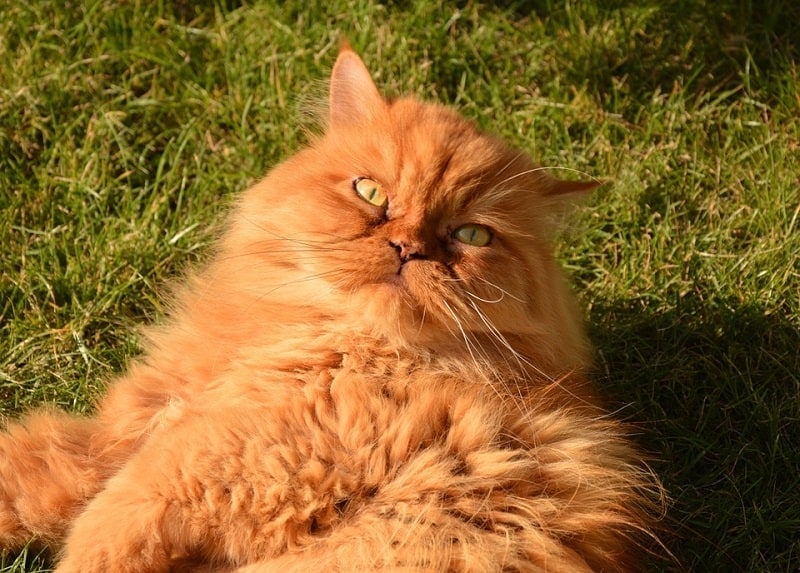
| Lifespan: | 15–20 years |
| Weight: | 7–12 pounds |
| Coat Length: | Long |
Among the oldest and most popular cat breeds, the Persian is dated back to 1684 B.C. They were first introduced in Europe during the 14th century and were in the first cat show held at the Crystal Palace in London in 1871.
They are known for their thick, flowing coats and flat faces. The breed comes in many color variations, with cream being included. They are a gentle breed that thrives best in quieter settings. Despite some of the health issues they face, they are among one of the longest-lived cat breeds.
13. Ragdoll
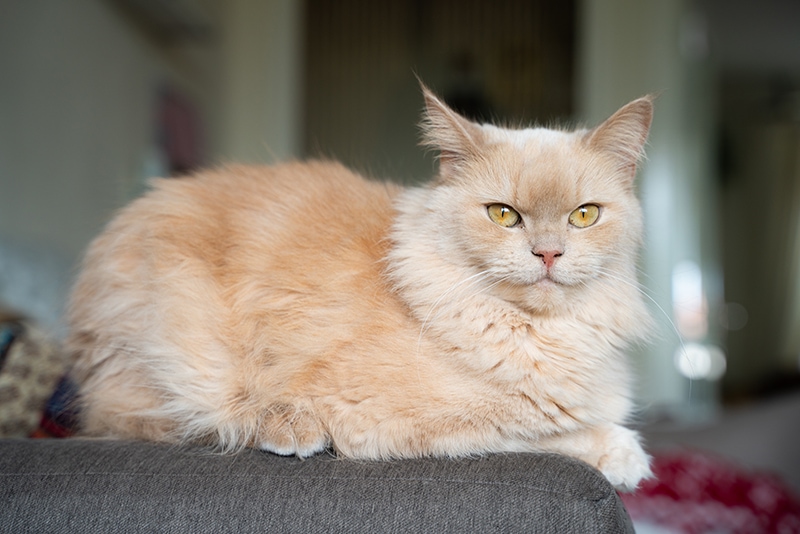

| Lifespan: | 15–25 years |
| Weight: | 8–20 pounds |
| Coat Length: | Medium to long |
A Persian breeder from Riverside, California developed the Ragdoll in the 1960s by crossing a stray domestic longhaired cat with one of her Persians, and through selective breeding practices for the specific look and temperament, the Ragdoll breed came to be. They have received championship status in all-breed associations except for the Cat Fancier’s Association.
The Ragdoll is a gentle breed that adapts well to different household environments, including those with multiple pets. Their coat is medium to long and is soft like rabbit’s fur. They have points like the Siamese and come in a few different color variations, including cream.
14. Sphynx
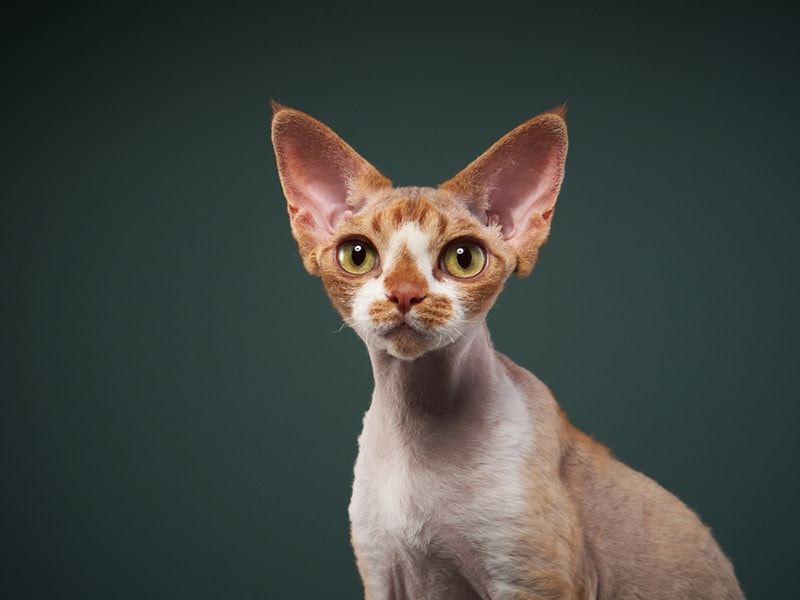
| Lifespan: | 15–20 years |
| Weight: | 8–10 pounds |
| Coat Length: | Hairless |
If you paused for a moment when reading the word Sphynx, allow us to explain. Though probably not the first thing that comes to mind for someone looking for a blonde-colored cat, the Sphynx does come in a cream variety, they’re just missing the hair, of course.
The hairlessness of the Sphynx was the result of a natural genetic mutation and quickly became one of the most popular cat breeds thanks to their unique look. They ended up getting championship status from the Cat Fancier’s Association in 2002. If you’re looking for a cat with cream-colored hair, this breed isn’t for you, but if you’re okay with a bald blonde the Sphynx can fit the bill.
15. Turkish Angora
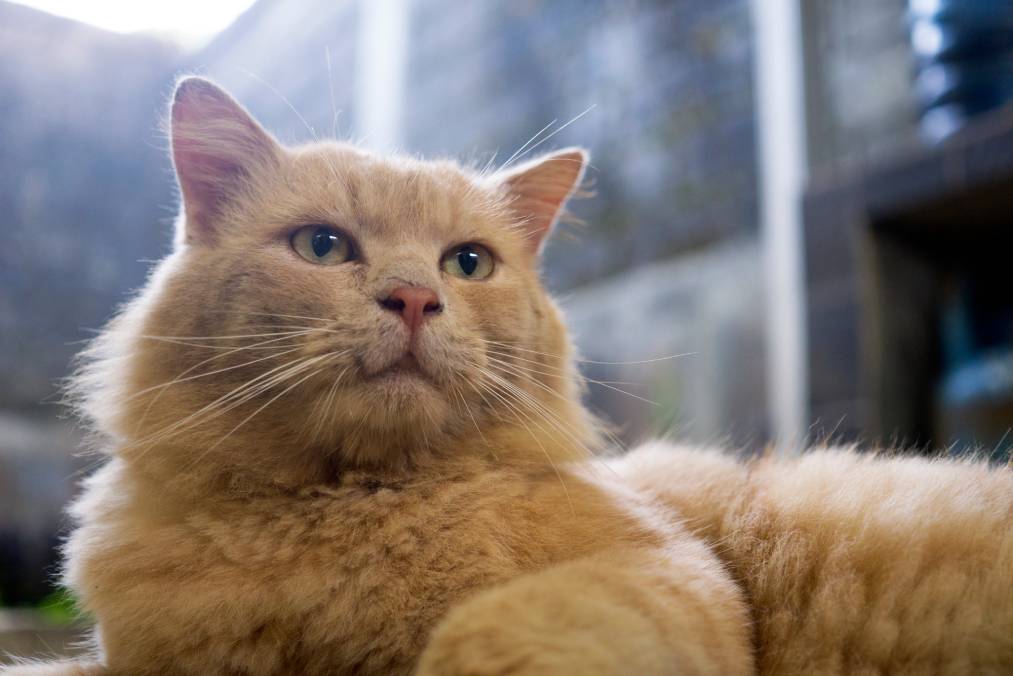
| Lifespan: | 15–20 years |
| Weight: | 5–10 pounds |
| Coat Length: | Medium |
An ancient breed that dates back centuries, the Turkish Angora first arrived in the United States in 1963, eventually earning championship status by the Cat Fancier’s Association in 1972. This breed is intelligent, athletic, very extroverted, and people-friendly. They enjoy high perches and even like to ride around on shoulders.
The Turkish Angora does great in households with other pets, dogs included. They have a silky coat of medium length and a silky, fox-like tail. The breed has no undercoat and comes in many different color variations and can be found in cream varieties.
Conclusion
While the term “blonde” is not used in the purebred cat world, there are certainly some cream-color varieties that fit the description. Though there are quite a few breeds that exhibit the sought-after cream-colored coat variety, this is a rare color variation overall.
For anyone looking for a certain breed in a cream color, it is highly recommended that you reach out to a reputable breeder of the breed of your choice and inquire about cream-colored cats. You may end up needing to travel or even be placed on a waitlist for a kitten. Another option would be to search the shelters and rescues for a cream-colored cat in need of a loving home.
Featured Image Credit: Nils Jacobi, Shutterstock



